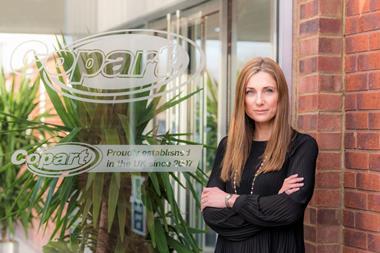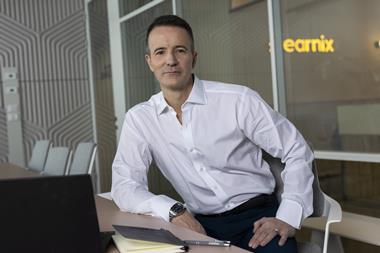BT’s director of insurance says the collaboration of bots and humans can create ‘super agents’
Marvel superheros could be considered worlds away from the UK’s matured insurance sector and the hallowed halls of Lloyd’s. Alexandra Foster, insurance, wealth management and financial services director at telecommunications and technology business BT, believes that technology has the potential to connect these polarised positions, with insurers’ contact centre staff using artificial intelligence (AI) and chatbots as their weaponry of choice to aid the insured.
“One of the things that we work with many of insurers around is that augmentation of data, artificial intelligence and the agent,” she said. “Either in chat form or video form, we’re seeing much more prevalence of video coming through into the contact centres.
“It’s not necessarily to disintermediate, but it’s very much to augment with humans. We see that ‘superisation’ of the agent as being where you’ve got the augmentation of artificial intelligence and chatbots coming together with agents so that you get a better outcome for customers – the coming together of bots and humans together to create super agents in effect. Captain America meets insurance.”
Marrying insurance and technology
This type of data use, number crunching and tech innovation for the financial services and insurance sectors is very much Foster’s forte.
After studying mathematics, statistics and computing at university, Foster went on to learn about actuarial science before starting a career in investment banking. She clocked up experience at big name firms, such as ING Nederland and BNP Paribas, prior to joining BT around eight years ago.
Initially, Foster had responsibility for BT’s financial services business, Radianz, but her role soon expanded to encompass Financial Technology Services, the accumulation of three businesses. She then moved into the organisation’s insurance arm; last year, her role developed again to include a wider, global remit.
Her day-to-day work involves looking after the technology requirements of businesses that operate within the insurance, wealth management and financial services markets.
“Our position [is] a systemically important provider of technology on a global basis to global financial services organisations; we don’t take that role lightly,” Foster explained. “I love just being able to go in and be with customers and then seeing how collectively, our technology can help transform. We’re definitely an enabling and security factor for the insurers.”
Insurance versus assurance
So, what are Foster’s focuses at the moment? Alongside the creation of super agents, blockchain is also high on the agenda – specifically around identity and authority methods as well as to simplify existing processes. She is also exploring quantum key encryptions and technologies, to aid data security and accelerate insurer calculations.
In terms of the insurance industry as a whole, however, Foster has noted a transition “from insurance to assurance”.
“Assurance is prevention,” Foster said. “An organisation insures a home, but if you’re able to set off a signal, whether it be a smoke alarm or a smart stopcock, they’re giving a signal in advance to say potentially there is a problem.
“From an insurance point of view, they’re then providing a service which means that given that flood is just about the number one [thing] that insurers generally have to pay out on, if you can start to bring that back and provide some [assurance] maybe that you won’t be flooded - smart stopcocks and things are clearly definitely the way forward and so I think that’s the inflexion point between [assurance] and insurance.”
Improving the customer experience
Foster also firmly believes that data is the “core theme” when it comes to enhancing the customer experience. Primarily, this is achieved through personalisation.
“We’ve worked with personalisation of data to create a product that we call Personalised Video that’s taking data that’s encrypted when we see it, creating the concept of personalised videos that then, when it lands with the insurer’s customer, is giving an output that is truly personal, truly easy to understand from a financial services point of view, so you’ve got that understanding of what you’re buying. It’s making insurance ever more relevant,” Foster noted.
Furthermore, the marriage between technology and data can improve insurers’ product composite, added Foster.
She explained: “One of the things that we see is the nirvana for many an insurer is to be able to increase their product composite with the end customer, but historically they’ve had pet over here, house over here, car over here – technology has the ability to bring all of those different data sets together.
[Insurers] might have already got that increased product composite or they’ve got the opportunity to upsell given the fact that they’re now able to look at much more data.”
Updating technology is also an essential part of the equation for Foster as “there’s an awful lot of legacy technology”. A simplification and transformation of insurers’ underlying tools and systems with modern networks, such as software defined wide area networks or the internet, can prove helpful – especially in moving away from physical, on-site premises to using virtual storage, for example the cloud.
Security
With this move away from the physical, however, comes a greater urgency for security – a theme that Foster is definitely seeing across the industry.
BT currently operates cyber security operations across 16 different countries: “That then gives us a lens to see what threat vectors are being used by whom in certain industries and by what actors. That gives us the opportunity to help inform and protect those insurers from risk and attack,” Foster added.
Linked to this, BT has developed a cyber maturity index with a scale of zero to five. This rates a business’s cyber security protection.
“We’ve done quite a lot of work with quite a lot of insurers in terms of where they are on that journey and about moving the maturity of the organisation up that curve. That theme will absolutely continue as insurers come off their legacy technology and transform; in some senses, it means you’ve got to be ever more vigilant about providing the security around that,” Foster said.
Technology is key
For Foster, technology has proved hugely impactful on the insurance sector.
She concluded: “Technology is enabling insurance organisations to make faster decisions with the use of cloud.
“Technology is both a benefit and a burden in a sense that the ability to store data now in the cloud rather than on actuarial tables, suddenly you get the benefits of being able to get data insight from that data; at the same time, you’ve also got a burden in terms of how to protect that data.”
















































No comments yet